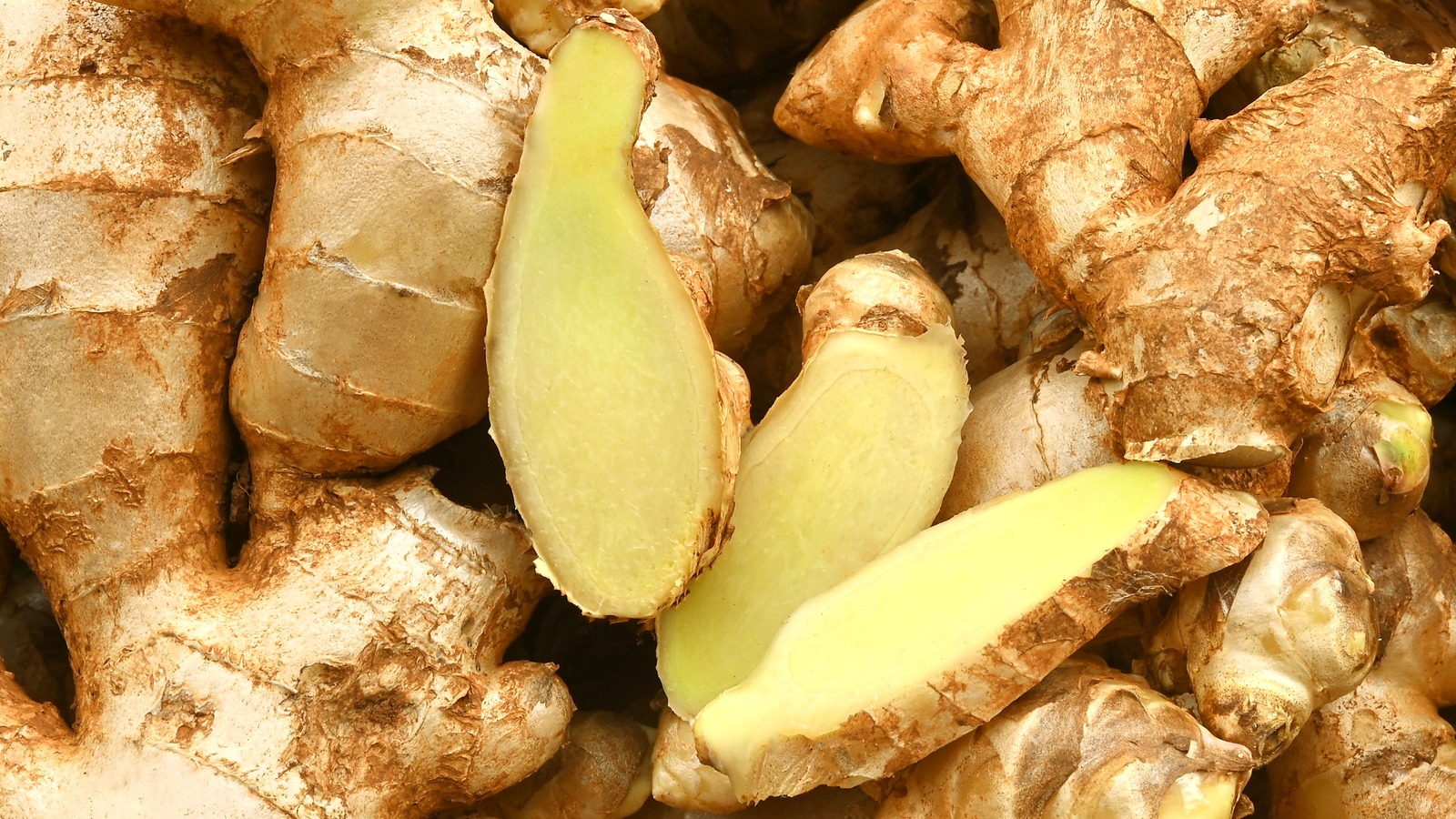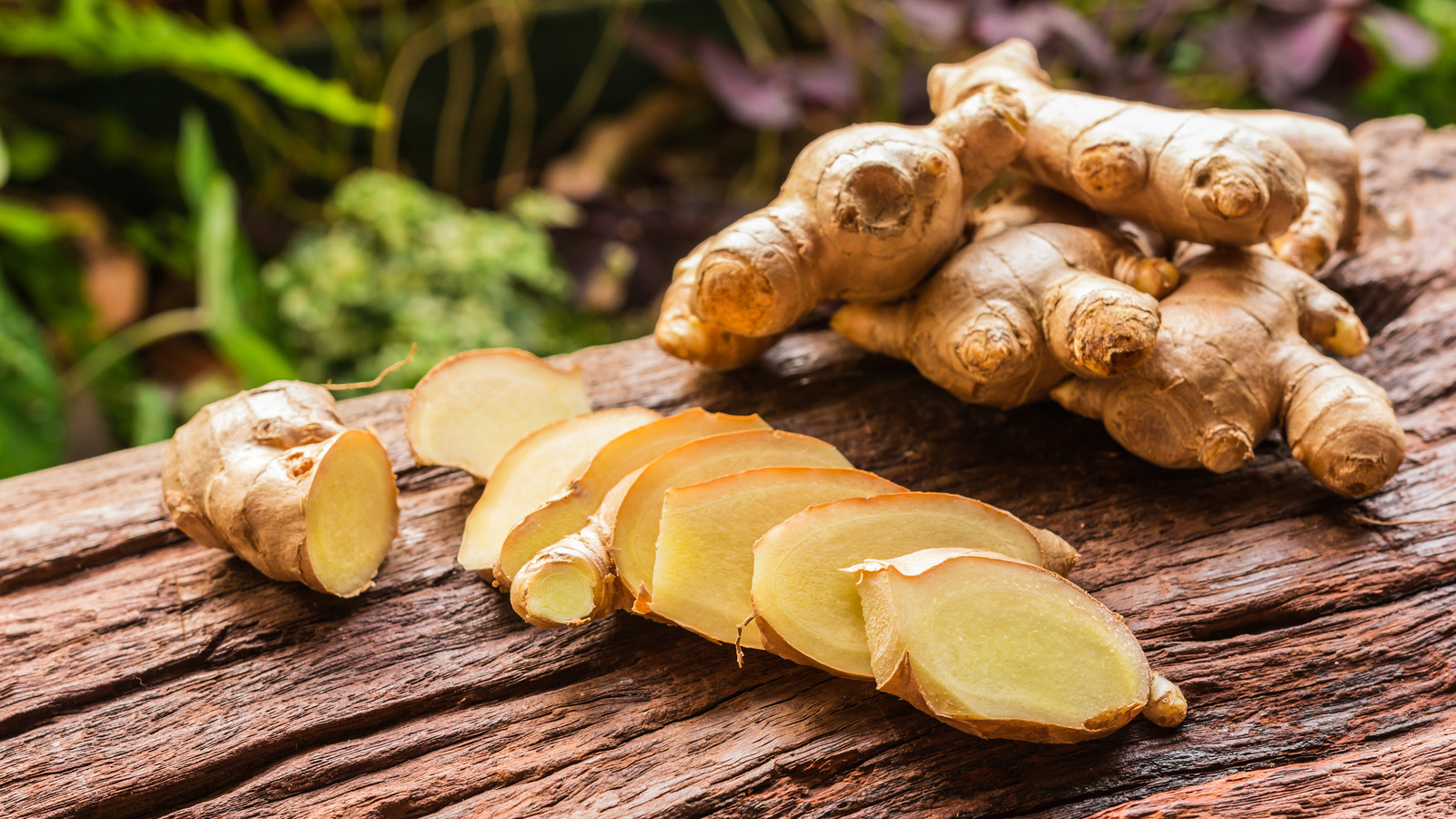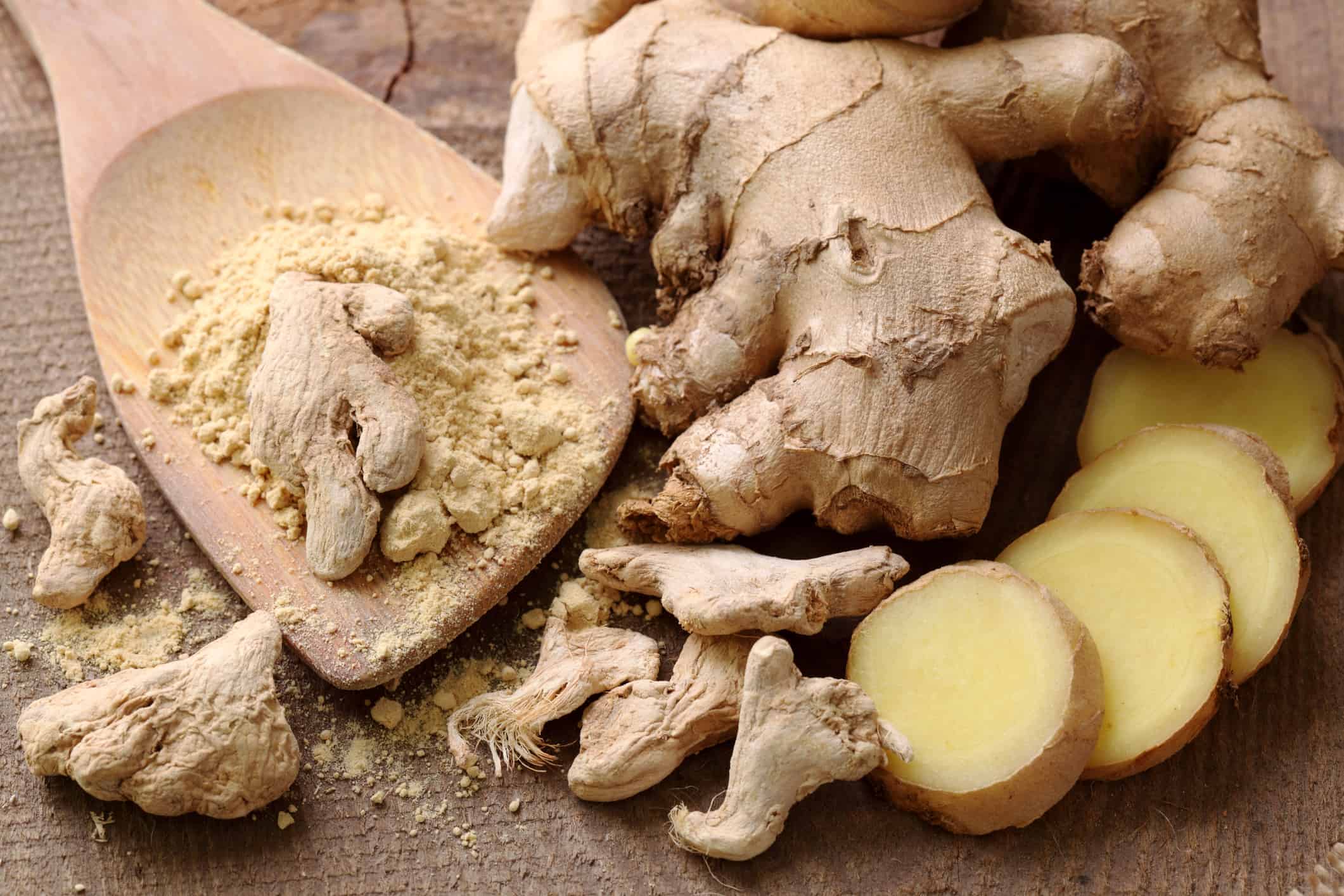Many folks, it seems, often find themselves wondering about a certain "Ginger" and, quite naturally, her significant other. It's a question that pops up, you know, when you're thinking about relationships and life partners. Perhaps you've heard whispers, or maybe you just came across the name and your mind went straight to a person.
That kind of curiosity is pretty common, really. People are always keen to figure out who's connected to whom, especially when a name like "Ginger" comes up. It's just human nature, isn't it? We like to put faces to names, and sometimes, too it's almost, we imagine a whole story.
However, when we talk about "Ginger" in this particular context, we're actually not referring to a person at all. As a matter of fact, the "Ginger" we're exploring here is something entirely different, a fascinating plant with a long, storied past and some pretty amazing uses. So, let's clear up any confusion right away, and discover the true nature of this popular "Ginger."
- Grand Hotel Riviera Sorrento
- Hunter S Thompson Daily Routine
- Top Of The Mornin Coffee
- 620 Jones Sf Ca
- Ferns And Petals India
Table of Contents
- Unraveling the Ginger Mystery
- What Exactly Is the Ginger Plant?
- A Rich History and Global Presence
- The Many Ways Ginger Helps Your Body
- Bringing Ginger Into Your Daily Life
- Common Questions About Ginger
Unraveling the Ginger Mystery
So, you came here wondering, "Who is Ginger's husband?" It's a perfectly reasonable question, especially if you're picturing a person named Ginger. But, you know, sometimes words have more than one meaning, and that's exactly the case here. The "Ginger" we are talking about today, the one that is so often discussed for its properties, is not a person with a partner or a family, it's actually a plant.
This plant, Zingiber officinale, is a pretty amazing creation of nature, really. It's a plant whose underground stem, called a rhizome, is widely known as ginger root or simply ginger. People use it for all sorts of things, from making food taste better to helping with various body discomforts. It's quite a versatile little thing, you see.
Therefore, when you ask about "Ginger's husband," the answer is, well, there isn't one in the way you might expect. The "Ginger" in question is a botanical wonder, a root that has been helping people for thousands of years. We're going to spend some time looking at this incredible plant, its origins, and all the wonderful things it can do.
- Tom And Jerry Memes
- Ivy Rehab Physical Therapy
- Something In The Water 2024
- Biden Stage 9 Cancer
- Honolulu Board Of Water Supply
What Exactly Is the Ginger Plant?
The ginger plant, Zingiber officinale, is a flowering tropical plant, quite a sight to behold, actually. It's what you might call an herbaceous perennial, which means it grows back year after year. It produces these annual pseudostems, which are false stems made from the rolled bases of its leaves, and they can grow about one meter tall. These stems bear narrow leaf blades, making it look rather graceful.
What we commonly call "ginger" is the rhizome of this plant. A rhizome is basically an underground stem that sends out roots and shoots from its nodes. This particular rhizome, ginger root, is what we slice, grate, or dry for all its wonderful uses. It has a distinctive, somewhat knobby appearance, as you might have noticed in the grocery store.
The plant's scientific name, Zingiber officinale, is a nod to its long history of use in medicine and cooking. The "officinale" part often indicates that a plant has been recognized for its medicinal properties. It’s a pretty important detail, wouldn't you say?
A Rich History and Global Presence
Ginger has a truly ancient story, which is quite fascinating, really. It's native to countries in Asia, and its use goes back thousands of years in both Chinese and Indian traditional medicine. People have been relying on it for a very long time, which, you know, speaks volumes about its perceived benefits.
Today, this flowering tropical plant grows in many warm places around the world. You'll find it thriving in China, India, various parts of Africa, the Caribbean, and other climates where it can get plenty of warmth. This wide distribution means it's one of the most commonly used dietary condiments across the globe, a truly universal ingredient.
Its journey from ancient folk medicine to a global kitchen staple is, arguably, quite remarkable. It shows how something so simple, a root from the ground, can become so deeply woven into human cultures and daily routines. It's more or less everywhere now, which is pretty cool.
The Many Ways Ginger Helps Your Body
Ginger is celebrated for more than just its taste; it has numerous possible health benefits, which is why so many people use it. Research shows it contributes to human health in a variety of ways, supporting digestion, for example. It can make your stomach feel better, which is a big deal for many.
One of the most well-known uses of ginger is its ability to help relieve nausea and vomiting. This includes easing morning sickness, which many expectant mothers find helpful. It’s a natural way to try and settle a queasy stomach, and it's been used for this purpose for ages.
Beyond nausea, ginger may also aid in managing arthritis and alleviating menstrual symptoms. It helps ease menstrual pains, which, you know, can be a real comfort. Some studies even suggest it helps reduce inflammation and pain in general, which is a pretty significant benefit for anyone dealing with discomfort.
Kate Donelan, a registered dietitian, points out that ginger is "well known for its ability to reduce nausea, but it also improves digestion and reduces inflammation, pain and can lower blood sugar." This expert insight really highlights the broad spectrum of its positive effects on the body. It’s a bit of a powerhouse, in a way.
Ginger also seems to help with other body functions. It may improve respiratory conditions, and it can reduce flatulence, which is something many people appreciate. Some believe it helps boost bone health, strengthens the immune system, and even increases appetite, making it quite a comprehensive helper for your overall well-being.
The root's power comes, in part, from a potent compound called gingerol. Fresh ginger, especially, boasts this compound, which has antioxidant properties. These properties help protect your body's cells, and gingerol also works to reduce inflammatory enzymes, which is why it's so good at fighting inflammation. It’s quite a complex little root, actually.
Bringing Ginger Into Your Daily Life
Ginger is a hugely versatile root, which is one of its best qualities. You can prepare and consume it in a variety of ways, making it easy to add to your diet. People tend to slice or grate the fresh root for cooking or brewing teas. It’s really quite simple to use in its raw form.
The pleasantly spicy “kick” from the root is what makes so many things appealing. Think about ginger ale, ginger tea, candies, and many Asian dishes. That distinctive flavor adds a fragrant zest to both sweet and savory foods, transforming ordinary meals into something special. It's just a little bit of magic, you know.
At the grocery store, you’ll find ginger available in many forms. There’s fresh ginger, of course, that knobby root you might tuck in your fridge. But you can also find it dried, powdered, pickled, and even crystallized. This variety makes it super easy to incorporate into different recipes and drinks.
From soothing teas to zesty dressings, spicy baked goods to fizzy herbal drinks, this bold botanical infuses warmth, flavor, and wellness into every sip and bite. It’s more than just a spice; it’s a way to enhance your food and, potentially, your health. You can learn more about how to use ginger effectively on our site, which is pretty handy. Just click here to explore more.
Whether you enjoy it fresh, dried, in tea, or even as a supplement, tapping into ginger's health benefits is straightforward. It's a popular spice with a long history of medicinal use, known for helping with stomach issues, and inflammation, as well as nausea. It's a pretty reliable go-to for many people seeking natural support.
While ginger has many purported healing properties, it’s also important to remember that overuse can come with risks, just like with anything. It’s always a good idea to use it in moderation and, if you’re thinking about ginger supplements, perhaps talk to a health professional first. You can often find reliable information on health topics from sources like the National Center for Complementary and Integrative Health, for instance.
So, the next time you see ginger at the market, you'll know it's not looking for a spouse. Instead, you'll see a powerhouse plant, ready to add flavor and a host of potential benefits to your life. It’s a root that has stood the test of time, truly.
Common Questions About Ginger
Is ginger a root or a stem?
That's a good question, and a common one, actually. Ginger is botanically a rhizome, which is an underground stem, not a true root. It's where the plant stores nutrients and from which new shoots and roots grow. So, while we often call it ginger root, it's technically a stem, which is kind of interesting.
What are the main health benefits of consuming ginger?
Ginger has quite a few notable health benefits, you know. It’s widely recognized for its ability to help reduce nausea and vomiting, including morning sickness. It also aids digestion, helps ease menstrual pain, and has properties that can reduce inflammation. People also use it for general pain relief and to support overall wellness, which is pretty comprehensive.
How can I use fresh ginger in my cooking?
Fresh ginger is really quite versatile in the kitchen. You can peel it and then slice it, mince it, or grate it into various dishes. It adds a lovely fragrant zest to stir-fries, soups, curries, and even baked goods like gingerbread. You can also brew it into a soothing tea. It's just a matter of trying it out and seeing what you like. For more ideas on using ginger in your kitchen, you might want to check out some of our recipes on this page.
- Lawn On D Boston
- How To Unfollow On Instagram
- 111 W 57th St
- Forest Creek Golf Club
- Hilton Cincinnati Netherland Plaza



Detail Author:
- Name : Mr. Hazle Steuber
- Username : jamil.dubuque
- Email : llittle@hotmail.com
- Birthdate : 1972-03-06
- Address : 6702 Ronny Forge Suite 256 South Louisaberg, TN 89321
- Phone : (727) 307-7849
- Company : Gulgowski-Murphy
- Job : Typesetter
- Bio : Qui est qui similique dolores voluptatibus rerum ut. Omnis quae nisi omnis dolor. Non ad dolor vel sit veniam nam sint.
Socials
facebook:
- url : https://facebook.com/jayne7995
- username : jayne7995
- bio : Quia odit autem asperiores et saepe est. Omnis ea numquam ut dolor.
- followers : 4659
- following : 524
instagram:
- url : https://instagram.com/jayne_xx
- username : jayne_xx
- bio : Vitae ut quo vel nihil asperiores. Veritatis quas repellat dolores ut.
- followers : 4176
- following : 233

